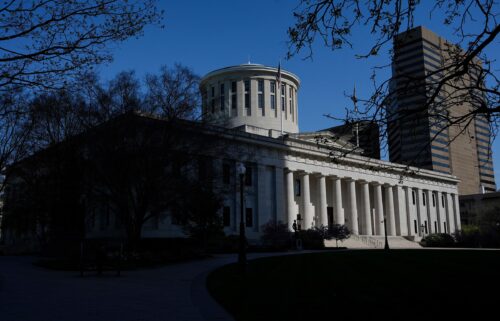California needs to stop building houses destined to burn

One sure way to tell a Californian from an Easterner is to ask about fire. Californians know a great deal about wildfires — having to flee them, breathing acrid smoke, brushing blankets of ash off their cars and sometimes watching their own homes consumed by flames.
Ten of the most destructive fires in the state have occurred since 2015. And California is currently in the middle of more record-breaking fires.
Experts have blamed ever-more-destructive wildfires on a number of factors, but much of the blame belongs with land-use and construction choices — choices that still look to the past rather than the future. When California rebuilds from these latest disasters, and as other communities make choices about where and how to build, they must take into account the accelerating risks that a changing climate brings.
In the United States, state and local governments largely control land use and building decisions. Those decisions almost invariably look to the past to determine what a building must withstand today. Building and zoning rules are generally based on historical extremes of wind speeds and flood levels. But climate change is causing ever-greater extremes. Reliance on the past can no longer safely guide our decisions for the future. The California wildfires vividly show why.
California has had more buildings destroyed by wildfire than all other states combined. California also has the most homes of any state in areas at high to extreme risk of fire. More than 1 million California homes — about one out of 12 — are at high risk of wildfire, according to a recent analysis.
In 2008, California enacted a landmark building code establishing fire-proofing standards for new construction in fire-prone areas. The new code calls for fire-resistant roofs, siding and defensible space around the structure. Buildings built to the new code have fared significantly better than older homes built to lower standards. According to a recent study of homes damaged in the 2018 Camp Fire, 51% of the 350 homes built after 2008 escaped damage. In contrast, only 18% of the 21,100 older homes did as well.
These results speak to the value of building codes. But they do not equate with success in the face of rising wildfire threats. If newly built homes have only a 50% chance of escaping damage today, what happens to those homes when wildfires worsen, as they are expected to, over the course of a 30-year mortgage?
Despite the high rate of destruction for homes built to the state’s latest standards, California keeps adding more homes to areas already deemed at high risk under current conditions. Just days after the Camp Fire, which was up to that time the deadliest and most destructive fire in California’s history, Los Angeles County approved the construction of 19,000 houses in an area that, according to the state’s own analysis, was already at “high” or “very high” fire risk, even without the added risk from climate change.
Similarly, San Diego County recently approved construction of 1,100 houses in an area that faces current fire risk and routinely burns. Many of these new homes seem destined to burn.
According to California’s own assessment, future wildfire risk worsened by climate change will likely expand burn areas by 77% by 2100.
In the face of looming climate risks, California must change its approach to building in areas at known wildfire risk. Hoping for the best will not keep people safe. Nor will assuming that the future will resemble the past. Californians must plan for a future where wildfire is a constant. That means it must stop building houses destined to burn.
Just as Californians must learn about the risks of bigger, more damaging wildfires, so must all Americans learn about the accelerating risks they face from climate change.
Climate change fuels ever greater extremes as temperatures continue to rise. To lessen future damage, decision-makers must turn away from the rear-view mirror. Improving building codes and strengthening land-use practices are a good way to start.




